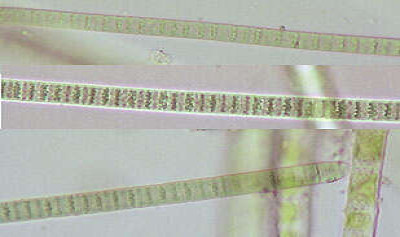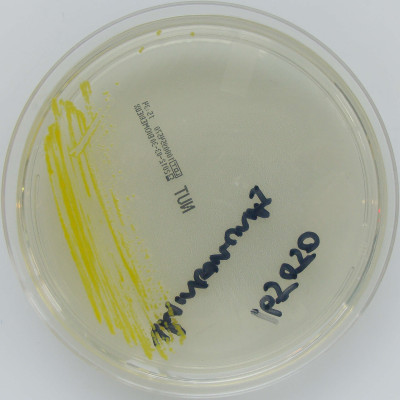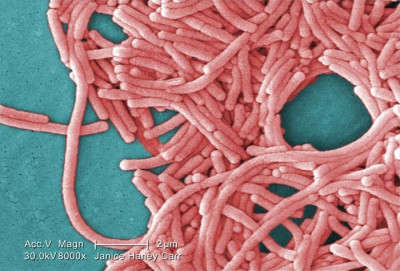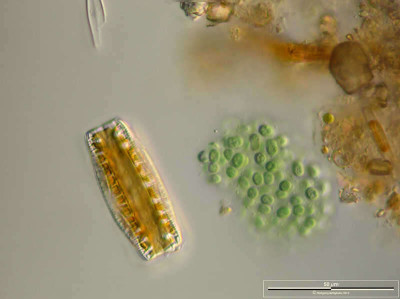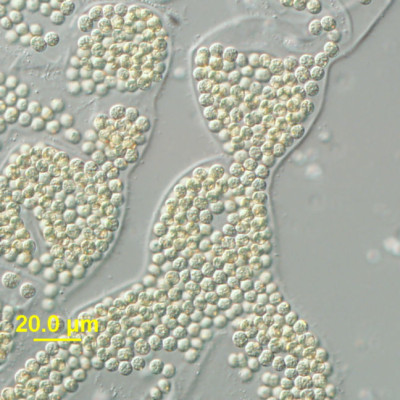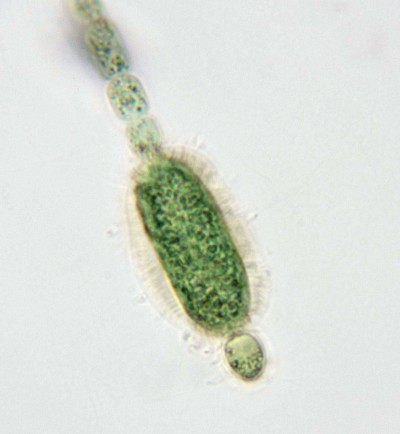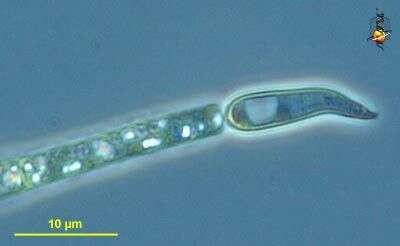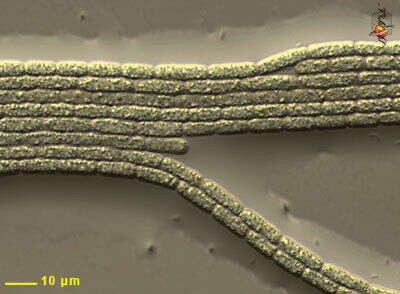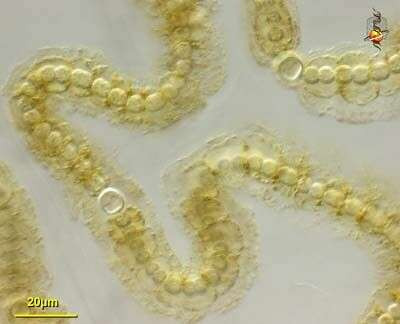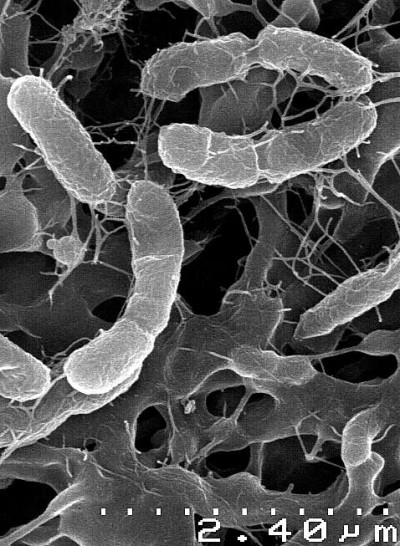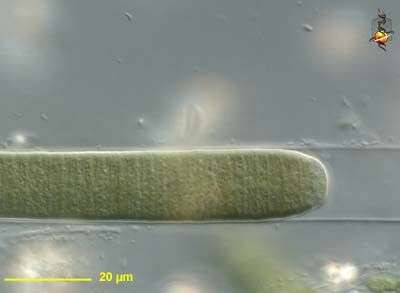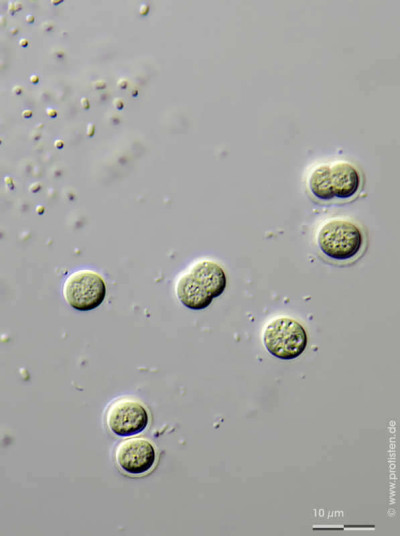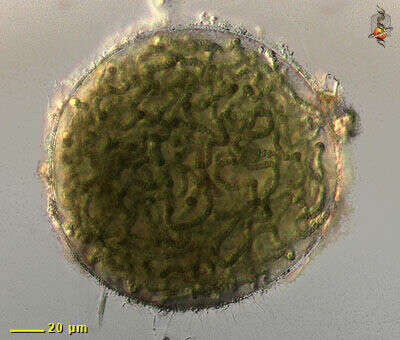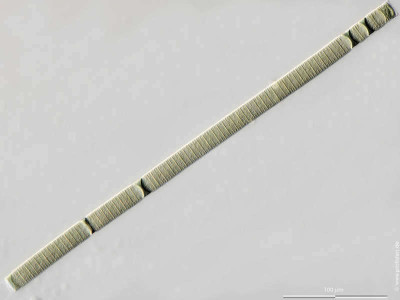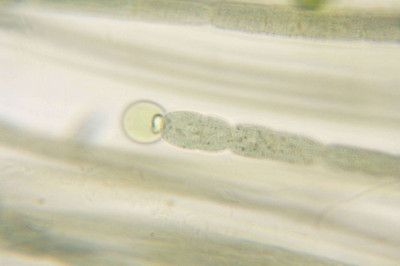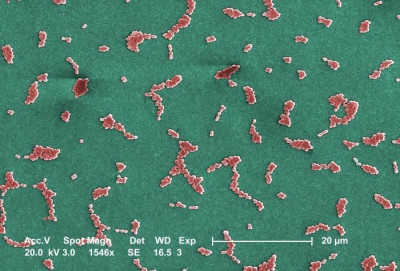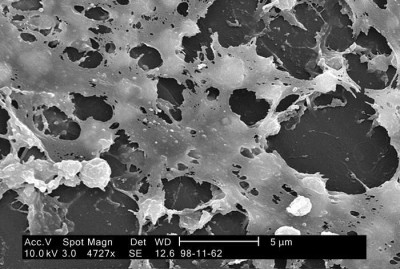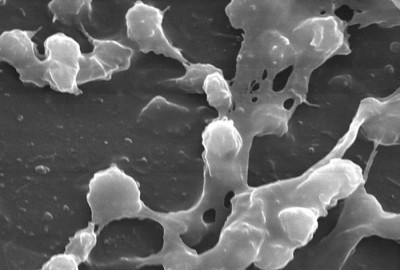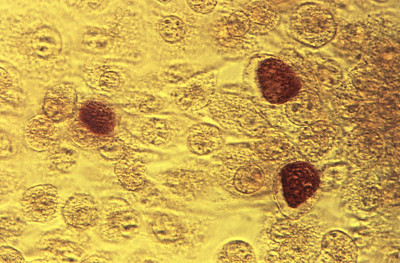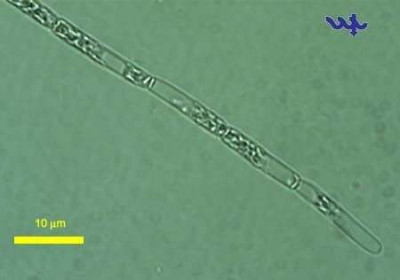In algal sample from temporary pool.
Malcolm Storey, BioImages, the virtual fieldguide, UK
12 Aug 2024
Isolated from a blood culture from a leukaemic patient with pyrexia. Isolate can be found in soil and doesn'’t usually cause human infection.
Nathan Reading, Wikimedia Commons
12 Aug 2024
Under a moderately-high magnification of 8000X, this colorized scanning electron micrograph (SEM) depicted a large grouping of Gram-negative Legionella pneumophila bacteria.
Public Health Image Library
13 Aug 2024
Aphanothece stagnina Colony accompanied by Epithemia adnata. Scale bar indicates 50 µm. Sample from a wetland at the Pillersee (Tyrol, Austria). The image was built up using several photomicrographic frames with manual stacking technique.
Wolfgang Bettighofer, protisten.de
01 Aug 2024
Microcystis wesenbergii light micrograph. Sample was collected from Pinto Lake, California.
National Biological Information Infrastructure (NBII)
05 Aug 2024
Longitude (deg): -2.8. Latitude (deg): 52.7. Longitude (deg/min): 2° 50' W. Latitude (deg/min): 52° 40' N. Vice county name: Shrops. Vice county no.: 40. Country: England. Identified by: Malcolm Storey. Comment: "among Anabaena scraped from lower surface of Frogbit leaf, in artificial pond at Field Centre". Category: microscope photograph. Image scaling: highly magnified. Where photo was taken: Microscope preparation. Photographic equipment used: Canon EOS1000D dSLR and Meiji microscope with x2.5 projection eye-piece.
Malcolm Storey, BioImages, the virtual fieldguide, UK
16 Aug 2024
Cylindrospermopsis (sill-in-dro-sperm-op-sis) raciborskii, a blue green alga (cyanobacterium) in which the terminal cell of the trichome (filament) appears a bit like a candle flame.
David Patterson and Bob Andersen, micro*scope
23 Jul 2024
Several filaments of a blue green alga that does not form heterocysts. This image taken after most of the water had dried out and illustrates how microbes may survive in very very thin films of water (in this case only a few microns thick). Differential intereference contrast optics.
David J Patterson, micro*scope
24 Jul 2024
Anabaena, one of the filamentous blue green alga which can form heterocysts. Single filaments are attached to the substrate and occur within an irregular mucus sheath which acquires metal salts to become brown in colour. Heterocysts are spherical, more hyaline, slightly larger than other cells and are a site for enhanced nitrogen fixation. Differential interference contrast.
Michele Bahr and David Patterson, micro*scope
24 Jul 2024
Venenivibrio stagnispumantis strain CP.B2 is the first microorganism isolated from the terrestrial hot spring Champagne Pool (75 °C, pH 5.5) in Waiotapu, New Zealand. The cells are motile, slightly curved rods measuring 1.04 to 1.56 μm in length and 0.33 to 0.41 μm in width.
Wikimedia Commons
25 Jul 2024
Lyngbya is a filamentous blue-green alga (cyanobacterium), fairly substantial. This image shows the mucus sheath which encloses each filament. Differential interference contrast.
David Patterson, micro*scope
29 Jul 2024
Chroococcus minutus Scale bar indicates 10 µm. Collected from a pond near Lemkendorf, isle of Fehmarn (Baltic Sea). The image was built up using several photomicrographic frames with manual stacking technique. The images were taken using Zeiss Axioplan with Canon EOS 70D.
Wolfgang Bettighofer, protisten.de
30 Jul 2024
Colonial blue green alga, filaments are bound together in a sheath to form a ball that may measure up to a millimetre in diameter. Differential interference contrast optics.
David J Patterson, micro*scope
31 Jul 2024
Oscillatoria limosa The scale bar indicates 100 µm. Sample from the Domänental pond near Kronshagen (Kiel, Germany). Images were taken using Zeiss Axioplan with Olympus OM-D M5 MKII.
Wolfgang Bettighofer, protisten.de
01 Aug 2024
On the lower surface of a Frogbit leaf, in an artificial pond at the Field Centre.
Malcolm Storey, BioImages, the virtual fieldguide, UK
05 Aug 2024
This SEM depicts a number of clusters of aerobic Gram-negative, non-motile Acinetobacter baumannii bacteria under a relatively low magnification of 1,546x. See PHIL 9328 for a black and white version of this image.
Public Health Image Library
06 Aug 2024
This highly magnified electron micrograph depicted numbers of Staphylococcus aureus bacteria, which were fond on the luminal surface of an indwelling catheter. Of importance is the sticky-looking substance woven between the round cocci bacteria, which was composed of polysaccharides, and is known as biofilm. This biofilm has been found to protect the bacteria that secrete the substance from attacks by antimicrobial agents such as antibiotics; Magnified 2363x.
S. aureus, often referred to simply as "staph," are bacteria commonly carried on the skin, or in the nose of healthy people. Approximately 25% to 30% of the population is colonized, i.e., when bacteria are present, but not causing an infection, in the nose with staph bacteria.
Public Health Image Library
12 Aug 2024
This highly magnified electron micrograph depicted numbers of Staphylococcus aureus bacteria, which were fond on the luminal surface of an indwelling catheter. Of importance is the sticky-looking substance woven between the round cocci bacteria, which was composed of polysaccharides, and is known as biofilm. This biofilm has been found to protect the bacteria that secrete the substance from attacks by antimicrobial agents such as antibiotics; Magnified 2363x.
S. aureus, often referred to simply as "staph," are bacteria commonly carried on the skin, or in the nose of healthy people. Approximately 25% to 30% of the population is colonized, i.e., when bacteria are present, but not causing an infection, in the nose with staph bacteria.
Public Health Image Library
12 Aug 2024
This photomicrograph reveals McCoy cell monolayers with Chlamydia trachomatis inclusion bodies; Magnified 200X. Chlamydia, caused by Chlamydia trachomatis, is the most common bacterial sexually transmitted infection. Using cell cultures from the McCoy cell line is one methods implemented in diagnosing Chlamydial infections. Date: 1975.
CDC/Dr. E. Arum; Dr. N. Jacobs, Wikimedia Commons
25 Jul 2024
Aphanizomenon ovalisporum (Cyanobacteria, Nostocales), showing atypical long cells in a filament grown in culture.
Alla Alster; Tamar Zohary, micro*scope
31 Jul 2024
 Encyclopedia
Encyclopedia
